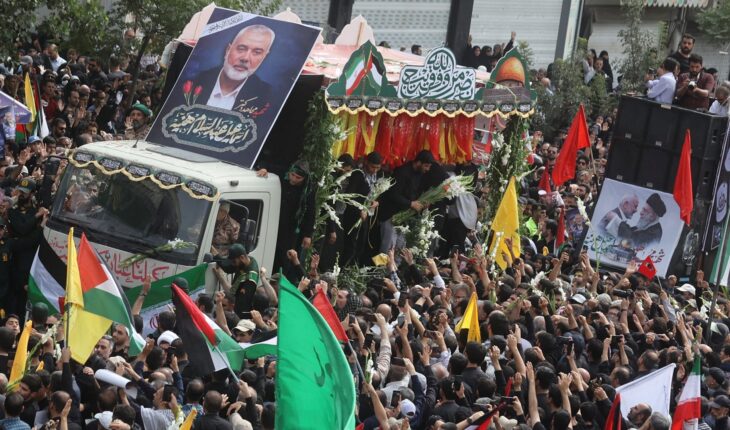With the assassination of the Hamas chief, Ismail Haniyeh, conventional warfare has triggered off a race for inducting laser technologies for the use of energy in destroying the enemy with minimum collateral damages.
The Israelis have destroyed two of their arch enemies, Ismail Haniyeh and Fuad Shukr, a veteran Hezebullah commander, recently, but two different strategies were adopted in their elimination. Ismail Haniyeh was eliminated in Tehran with minimum damages to the property and life, on the other hand, Fuad Shukr was killed at Beirut destroying a part of the building and wounding scores of his associates.
The third sensitive spot in global politics, where the possibility of large scale violence could not be ruled out is Venezuela. The country, which has always been one of the wealthiest regions in America, is facing a political crisis following the recently held presidential election. There are reports of large-scale manipulations in getting the present incumbent, Nicolas Maduro, re-elected.
The world is already facing the two unending conflicts between Russia and Ukraine and the ongoing war between Israel and Hamas, a terrorist outfit having the direct support of Iran and blessings of Russia and China. Meanwhile ,the US-supported Israel has now finally the upper hand in the West Asian conflict.
It is being believed among the experts of strategic affairs that the assassination of the Hamas leader has given new confidence to the Biden Administration that its war industry is going to get an unprecedented boost with the Tehran operation.
In the case of Maduro, the US has already expressed its displeasure, but Russia and China didn’t hesitate to congratulate Maduro for his reelection.
The reference of Venezuela being one of the top producing countries in oil rich countries is necessary. Earlier, its oil industries, mostly being run by American companies, were nationalized. With the exit of the American capital, the country has been facing a perennial financial crisis. It is also now among the three sensitive spots in contemporary geo-politics, where violence may erupt anytime. Interestingly, the conflict zones, East Europe, West Asia and Venezuela are also major producers of oil. Since in Venezuela, the country’s opposition leaders have already rejected the poll results, it means the situation in the country might lead to a major upheaval. There is no denying that these conflicts help war industries to test their new weapons, though causing large scale miseries.
Kinetic Energy : The recent elimination of the Hamas leader appears to have rescripted the current warfare strategy. At present, the US and China are at the forefront of laser-based weapon systems, but in recent years, Russia and India too have joined the race, perhaps, a little late.
The US company, Raytheon Laser Technology, has announced its intention to produce medium tactical vehicles. The company has already received a sum of 10 million USD for developing weapons, which could destroy artillery, small weapons and drones with laser beams.
Meanwhile, China has announced that its laser assault rifle , ZK ZM-500, is ready for mass production. These weapons based on the use of direct energy systems have caused anxiety among India’s strategic affairs experts. They don’t rule out that in the next conflict on the India-Tibet border, the dragon might deploy its laser weapons. Earlier, India’s warfare strategists were worried about the growing use of drones in future conflicts with Pakistan and China. The new generation weapons have brought in paradigm changes regarding security concerns in the Indian context. In other words, with these weapons, China and its crony, Pakistan, could cause huge embarrassment to India, if they engage their southern neighbor in an armed conflict with the new generation weapons. It is a worldwide phenomenon, when the energy based technology for warfare is getting attention. The Blue halos locus laser defense system, recently developed in the US, has caused worldwide concerns.
The new technology could be used for the defense as well as in offensive operations. It is being claimed that it could intercept a small drone before it hit the target, as well as for destroying the enemy .
One of the scholars of the Henry Jackson Society, Major Andrew Fox, also a former paratrooper, is convinced that the recent wars, especially the 20-year conflict in Afghanistan has promoted the use of energy in modern warfare.
It is not official, but it has been noticed that the laser weapons used in killing the Hamas leader didn’t cause any noise. Azerbaijan being its strategic ally, Israel might have sent its drone from the facilities in the country developed under its supervision. The drones or missiles hit the target without much noise to cause any alarm. They just crossed the Caspian sea to hit the target
It also goes to the credit of the Israeli intelligence that they could keep a watch on the terrorist leader, who had traveled to Tehran with his companions in a private jet. It is also being asked why Israel didn’t attack the residences of the Hamas leaders in Qatar , the answer, perhaps, could be that Israel has already assured the ruler of Qatar being used as a mediator in the West Asian conflicts that it would not be attacking the Hamas hideouts in their country.
India’s Durga-2 : India’s defense establishment has taken steps to learn the laser technologies for upgrading the country’s defense systems, but compared to China and the US, the Indian efforts are still at a nascent stage.
Initially, the Delhi-based Laser Science and Technology has been entrusted to develop laser based weapons. It is not known when India would be able to showcase her success in this field. Both the US and China have already established themselves in this game changing technology.
India too is expected to join this coveted field, but it appears her formal presence in the development of the energy based system could be delayed due to the paucity of resources. It may be noted that our investment is estimated to be only 100 million USD while other countries have been investing much more funds in developing war technologies.
Gopal Misra has been associated with national and international media. His books on journalism and geo-politics have been well-appreciated. Views are personal.






